Introduction to Truth Tables, Statements, and Logical Connectives
A truth table is one of those things in mathematics that is much easier to understand when you see how it looks and how it works, than learning through its definition. Anyway, we will attempt to define it in order to have a baseline or basic understanding of what it is.
Definition of a Truth Table
In math logic, a truth table is a chart of rows and columns showing the truth value (either “T” for True or “F” for False) of every possible combination of the given statements (usually represented by uppercase letters P, Q, and R) as operated by logical connectives.
Two Components of a Truth Table
I. Statement
Definition: A statement is a sentence or mathematical expression that is either definitely true or definitely false but not both. It is usually denoted by an uppercase letter or variable. The common ones are P, Q, R, and S.
II. Logical Connective
Definition: A logical connective is a word usually written as a symbol that carries a particular instruction of logic on how to operate a statement or compound statement. Logical connectives can also be used to join or combine two or more statements to form a new statement.
Examples of Statements
- Statements that are definitely true.
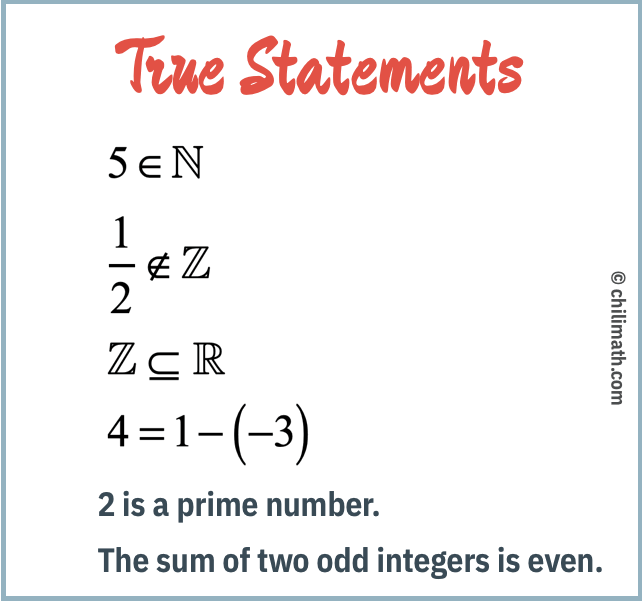
- Statements that are definitely false.
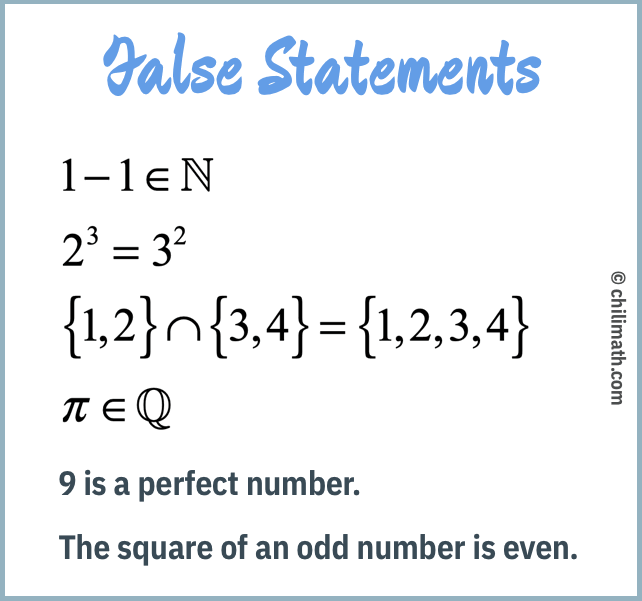
OPEN SENTENCE
An open sentence is a sentence that is either true or false depending on the value of the variable(s). This kind of sentence is NOT a statement because it must be definitely true or definitely false.
Examples:
- The number [latex]\color{red}k[/latex] is even.
Notice, the sentence is true if [latex]k=4[/latex] or false if [latex]k=7[/latex]. Since the truth of the sentence can be true or false depending on the value of the variable [latex]k[/latex], then it is an open sentence, and thus not a statement.
- The number [latex]\color{blue}x^2[/latex] is always positive.
This sentence may look like a statement because it seems that it is definitely true. However, upon closer scrutiny, the sentence is true if [latex]x>0[/latex] or [latex]x<0[/latex]. But there is one loophole, that is, if [latex]x=0[/latex], the sentence becomes false because [latex]0^2=0[/latex]. Remember, [latex]0[/latex] is neither positive nor negative. Thus, this sentence is NOT a statement but a simple case of an open sentence.
Common Logical Connectives
For this part of the lesson, my goal is to briefly introduce you to the five common logical connectives which are also known as logical operators. You will also know the symbol used for each operator, and what it stands for.
Note: [latex]\large{P}[/latex] and [latex]\large{Q}[/latex] are statements.
1) Negation
- Symbol: ~ or [latex]\neg [/latex] is read as NOT
- Example: ~[latex]P[/latex] or [latex]\neg P[/latex] is translated as “not [latex]P[/latex]” or “it is not true that [latex]P[/latex]”
2) Conjunction
- Symbol: [latex] \wedge [/latex] is read as AND
- Example: [latex]P \wedge Q[/latex] is translated as “[latex]P[/latex] and [latex]Q[/latex]”
3) Disjunction or Inclusive OR
- Symbol: [latex]\vee[/latex] is read as OR
- Example: [latex]P \vee Q[/latex] is translated as “[latex]P[/latex] or [latex]Q[/latex]”
4) Implication or Conditional
- Symbol: [latex]\Rightarrow[/latex] is read as IMPLIES
- Example: [latex]P \Rightarrow Q[/latex] stands for the statement “[latex]P[/latex] implies [latex]Q[/latex]”
5) Double Implication or Biconditional
- Symbol: [latex]\Leftrightarrow[/latex] is read as IF AND ONLY IF
- Example: [latex]P \Leftrightarrow Q[/latex] stands for the statement “[latex]P[/latex] if and only if [latex]Q[/latex]”
Truth Tables for Negation, Conjunction, and Disjunction
I intend to cover only the three basic logical operators, namely: negation, conjunction, and disjunction. This part of the lesson will give you a preview on how a truth table may look.
I have a separate lesson discussing in-depth how to construct the truth tables of the logical connectives mentioned here and the rest of them.
For now, let’s focus our attention on the truth tables below:
1. Truth Table of Negation
Rule for Negation Logical Operator
The truth value of a negated statement is the exact opposite of the truth value of the original statement.
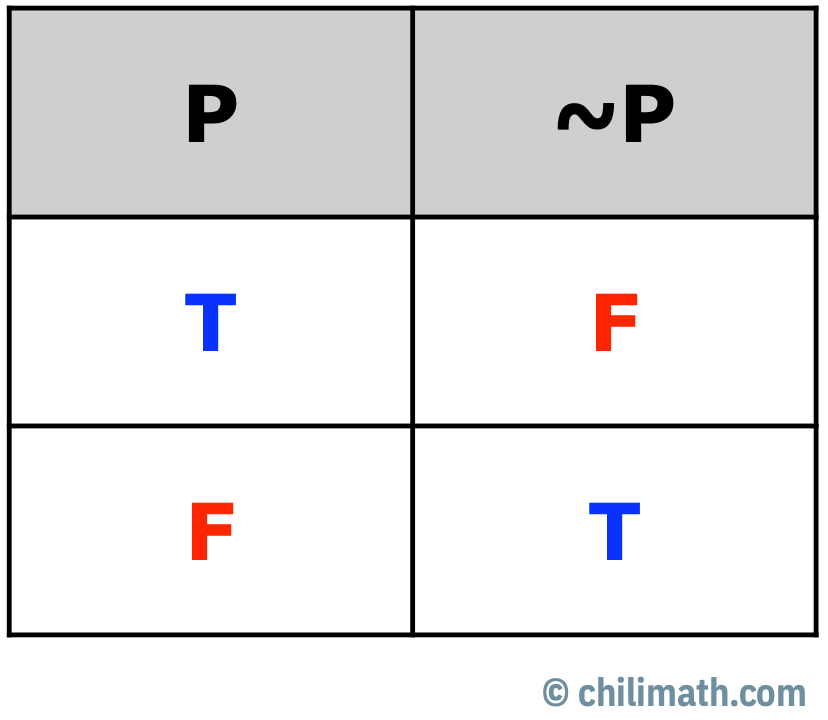
2. Truth Table of Conjunction
Rule for Conjunction or “AND” Logical Operator
The compound statement [latex]P[/latex] and [latex]Q[/latex], written as [latex]P \wedge Q[/latex], is TRUE if the statements [latex]P[/latex] and [latex]Q[/latex] are both true. Otherwise, the statement [latex]P \wedge Q[/latex] is FALSE.
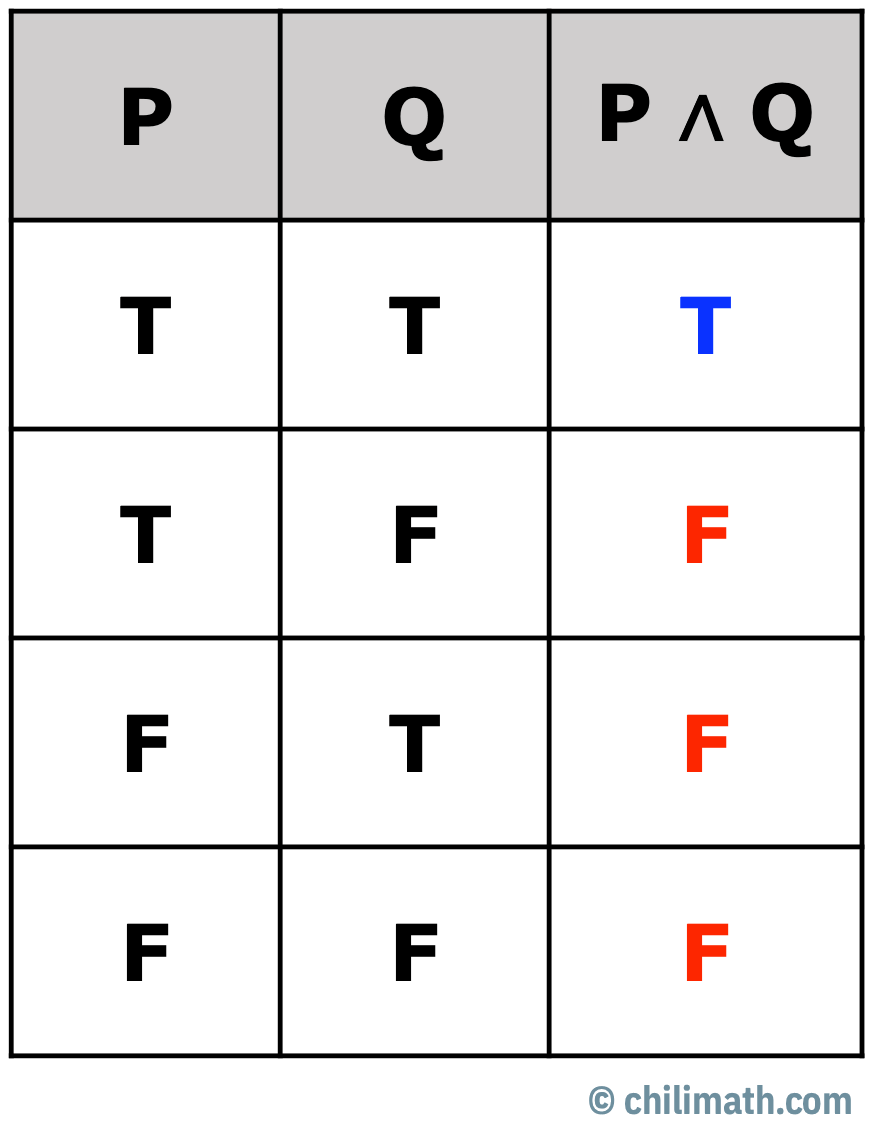
3. Truth Table of Disjunction
Rule for Disjunction or “OR” Logical Operator
The compound statement [latex]P[/latex] or [latex]Q[/latex], written as [latex]P \vee Q[/latex], is TRUE if just one of the statements [latex]P[/latex] and [latex]Q[/latex] is true. In addition, since this is an “Inclusive OR”, the statement [latex]P \vee Q[/latex] is also TRUE if both [latex]P[/latex] and [latex]Q[/latex] are true. Therefore, it is only FALSE if both [latex]P[/latex] and [latex]Q[/latex] are false.
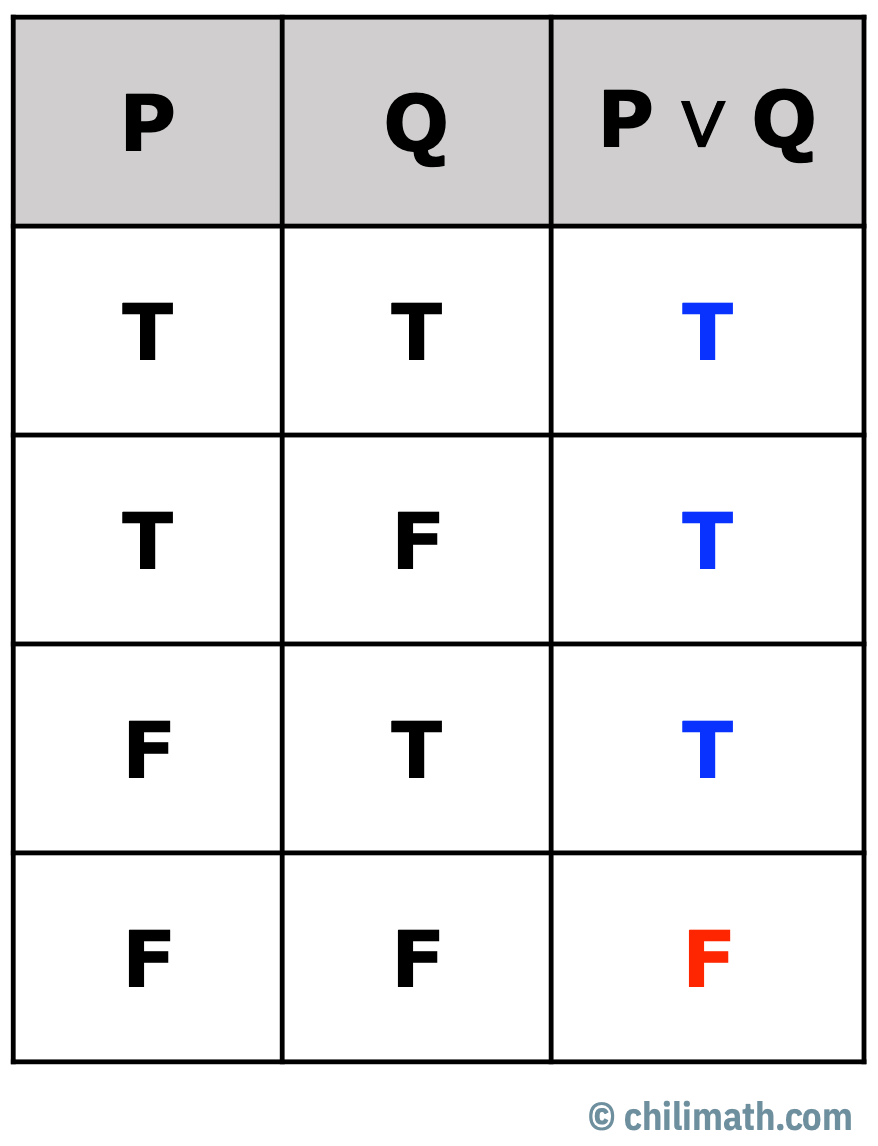
You may also be interested in these related math lessons or tutorials:
Truth Tables of Five (5) Common Logical Connectives or Operators
Converse, Inverse, and Contrapositive of a Conditional Statement
